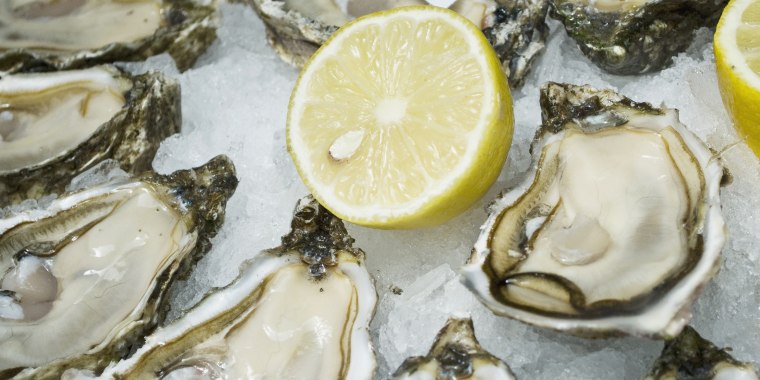Seafood lovers are ingesting tiny pieces of plastic — potentially tens of thousands a year — when they order clam chowder, fried oysters or scallop pasta.
Mollusks — such as mussels, oysters and scallops — collected off the coasts of Asia contained the highest levels of microplastics among seafood, researchers found after reviewing 50 studies that tested samples intended for human consumption.
Fish and crustaceans such as shrimp and crab contained the fragments as well, according to the paper, recently published in Environmental Health Perspectives.
The bits of debris — degrading from larger pieces of plastic junk in the water or from microbeads added as exfoliants to beauty products and flushed down the drain — are smaller than a sesame seed, according to the National Oceanic and Atmospheric Administration.
Researchers “conservatively” estimate that 14 million tons of microplastics can be found on the world’s ocean floor, according to a study published last year in Frontiers in Marine Science. They can be harmful to ocean and aquatic life.
People are exposed by inhaling or ingesting the particles, which have been detected in human lung tissue, gastrointestinal tracts and stools. Plastic baby bottles expose infants to millions of such plastic bits, a recent study found.
How does that impact human health? Researchers are still trying to figure out the answer.
The presence of microplastics in seafood does raise concern, but it’s currently difficult to measure any associated risk, said lead study author Evangelos Danopoulos, an environmental pollution researcher and postgraduate student at Hull York Medical School in York, England.
Animal and human cell research has shown microplastics can have adverse effects, he noted.
“The nature of microplastics makes them intrinsically hard to research because we are looking at a mixture of a lot of different polymers, with different sizes and concentrations,” Danopoulos told TODAY.
“Although we know some polymers can cause effects to humans at the cellular level, we don’t know exactly what kind of ‘dose’ will have those effects and if that level of dose is one likely to be encountered at the typical levels likely to occur through seafood consumption.”
More research is needed before researchers can provide specific advice to the public about eating seafood, he added.
Exposure depends on how many plastic bits are in a specific food and how much of this food people typically consume. The maximum amount of microplastics a human could ingest from seafood would be about 55,000 particles a year, the authors of the review calculated. For context, that annual maximum rises to 458,000 particles for tap water and 3,569,000 for bottled water, Danopoulos said.
Mollusks contain the most microplastics among seafood because they are “bottom feeders,” making them a natural filtering system of the oceans and therefore vulnerable to this type of contamination, the review noted.
They may also provide a bigger dose of the plastic bits because people eat them whole, as opposed to eating only parts of larger fish — whose gills and gastrointestinal tracts contained microplastics, but whose flesh did not, the authors wrote.
The National Fisheries Institute, an industry trade group, called microplastics in seafood an "interesting and important topic to research," but emphasized there's no scientific evidence of harm to human health.
The 2020-2025 Dietary Guidelines for Americans recommend Americans eat seafood two to three times per week, said spokesman Gavin Gibbons.
“The simple fact is that seafood is the healthiest animal protein on the planet and not eating seafood would cause greater harm than any potential risk associated with microplastic exposure,” he noted.
“Humans ingest more microplastics from breathing than they do eating seafood and no heath professional would suggest people breathe any less than they do now.”
The findings are a reason for researchers, policy makers and the industry to pay more attention to this emerging contaminant, he noted.
In the short term, the depuration process — in which mollusks are placed in flowing seawater to gradually flush out contaminants — could be effective.
In the long term, effective waste management can ultimately reduce microplastic content in the environment and thus in seafood, Danopoulos said.



